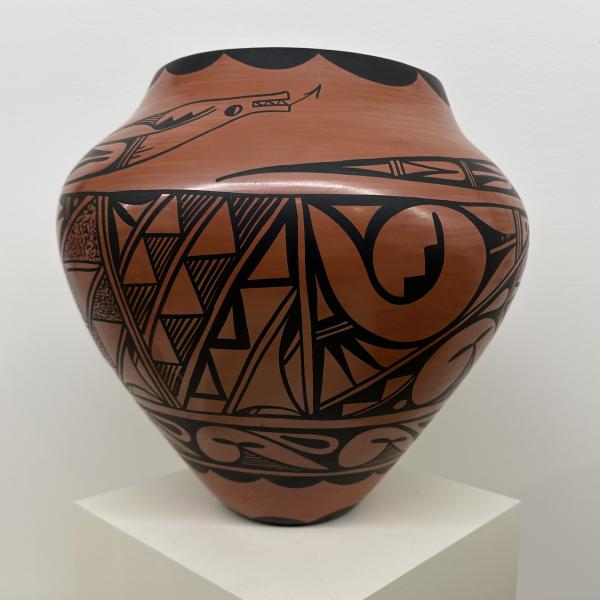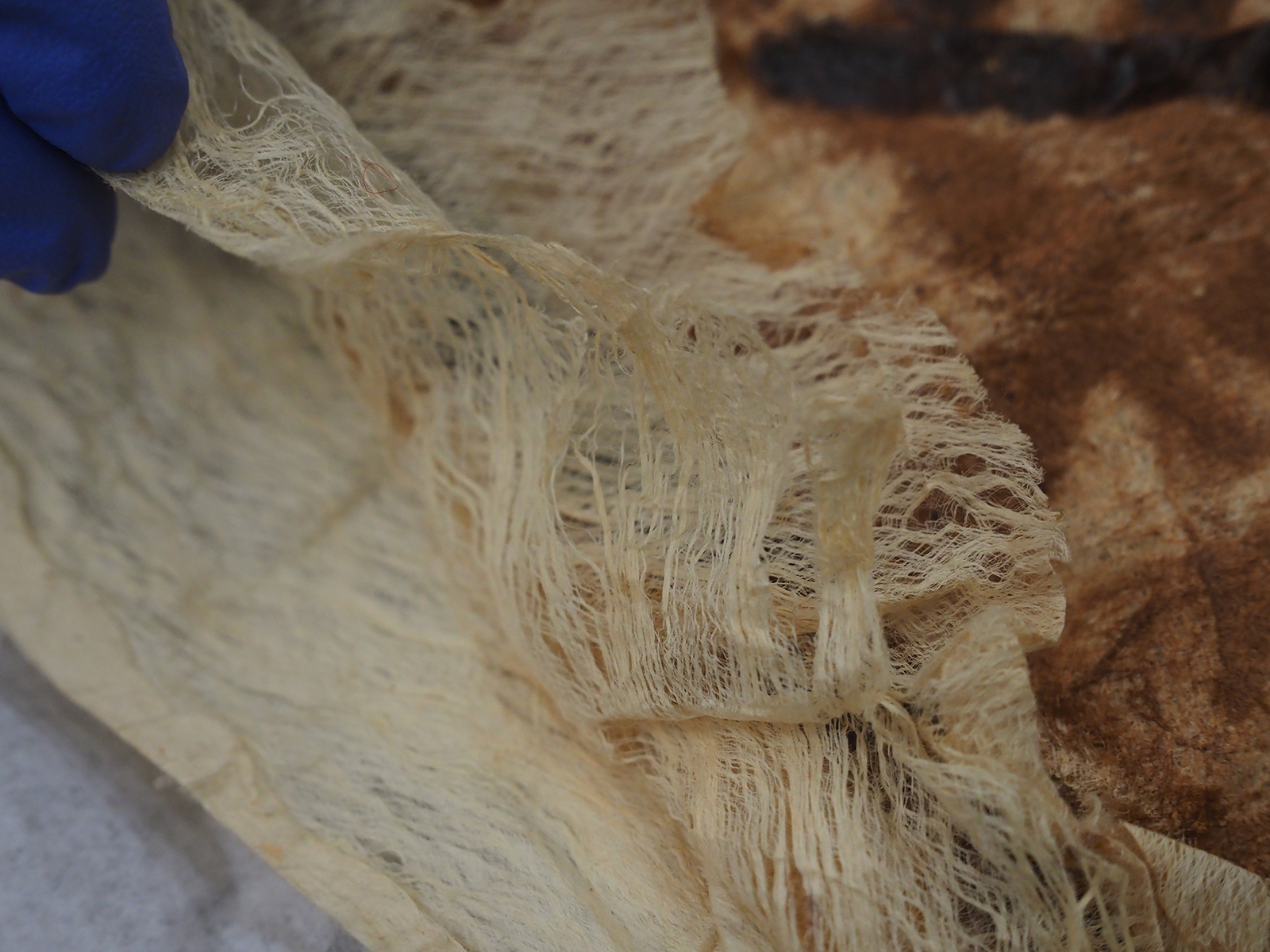Contemporary Osage Art
Current Special Exhibit
View current works by two Osage artists, Norman Akers (Professor of Art, University of Kansas) and Joe Don Brave. These two artists blend Osage tradition with imagery personal to their own experiences as members of the Osage Nation to remind viewers that the Native American experience is a contemporary one that remains rich in history.
On Exhibit now through early Summer 2025.


Permanent Exhibits
Early Humans
Biological anthropology studies everything from our human origins to how skeletal structures changed based on influencing factors such as environment, disease, occupation. This exhibit only goes back in Hominin history 5 million years and shows both cranial and post-cranial differences between early hominins and Homo Sapiens/humans. We also highlight the earliest known tools and the development of the early human toolkit through the Upper Paleolithic advent of cultural materials in the archaeological record.
Archaeology
View archaeological material from what is now Missouri dating to the first arrival of humans in central North America ~13,000 years ago through their contact with individuals from other parts of the world ~550 years ago. This exhibit looks at the four different time periods attributed to objects from this region (Paleoindian, Archaic, Woodland, and Mississippian), and highlights advancements in the technology and materials used as well as the lifestyle of the peoples and their culture. This exhibit has been made in consultation with regional tribes to ensure accuracy of text and understanding of the objects displayed.
Archery
The MoA's archery collection is one of the largest in the world consisting of several thousand pieces of archery and archery-related objects, as well as cultural items depicting archery in one form or another, from six continents. The portion on exhibit highlights pieces from China, Mongolia, Korea, Japan, Southeast Asia and Oceania, Africa, the Middle East, South America, and the North American Arctic. The exhibit focuses on a common tool used globally for thousands of years, to communicate how different peoples' resources, traditions, and beliefs are combined to create unique material objects.
North American Peoples
The largest exhibit area is dedicated to Native American communities in North America. Objects are arranged by geographic region and include both historic objects as well as contemporary/modern ones. This is space to examine and reflect on the rich traditions of Native Americans through their art and craft, as well as celebratory and everyday objects. Regions included are the Southwest, Eastern Woodlands, Plains, Northwest Coast and Arctic. There is also a special exhibit space devoted specifically to the Osage Nation whose traditional homelands (amoung others) the museum sits upon.
